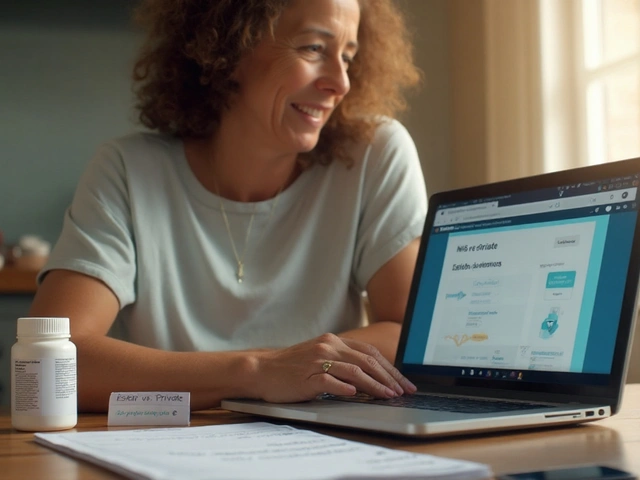Most people have days where they can’t find their phone, lose track of appointments, or let house chores pile up until it’s time to panic-clean just before friends come over. But for people with ADHD, this isn’t just an occasional comedy of errors—it’s a daily, exhausting puzzle. Here’s the kicker: living with ADHD doesn’t mean you’re doomed to a hurricane of sticky notes and kitchen junk drawers forever. The trick isn’t just ‘trying harder’ or ‘getting motivated’ (who hasn’t heard that, right?). The secret comes down to using strategies made for ADHD brains, backed by science, and finding a practical system that fits your real life. And if you’re reading this from a half-tidy flat with your laundry on the bed, trust me, you’re in good company.
Understanding Why ADHD Brains Struggle with Organization
ADHD isn’t about laziness or simply forgetting stuff. This is a neurological difference that changes the way your brain handles attention, memory, and impulse control. Scientists at King’s College London found that the prefrontal cortex—the area in charge of planning, decision-making, and staying on track—often works differently when you have ADHD. That’s why even the idea of “just make a list” can sound laughable; writing the list is easy, but remembering the list exists,—that’s another level.
Research published in the journal Neuropsychology shows things like working memory and executive functioning are harder with ADHD, which turns the basics (paying a bill on time, bringing the right jumper to work, not double-booking a dentist appointment) into mini-missions. If people around you wonder why you can remember obscure football stats but forget to pay your rent, it comes down to which type of attention your brain prioritizes. With ADHD, urgent things or what’s firing up your brain in this very moment tend to take the spotlight.
Organization isn’t just about keeping a tidy sock drawer; it’s about controlling your mental environment so you spend less time searching, stressing, or apologizing. The real cost goes deeper, too. A 2022 NHS study found that people with ADHD are three times more likely to report daily life stress and two times more likely to get penalized at work due to missed deadlines or forgotten commitments. Organization isn’t a nice bonus—it’s a serious tool for survival.
But here’s a bright spot: ADHD brains are built for creativity, out-of-the-box thinking, and rapid problem-solving. Once you set up the right systems, you can actually use those quirks for good. Imagine your superpower isn’t just chaos, but creative organization that actually sticks.
Step-by-Step Systems That Actually Work
So, what does work? First up, drop the perfect planner photos you see on social media. Colour-coded bullet journals and endless notebooks are nice to look at, but if you end up resenting elaborate schedules, it’s just not right for you. Organization should always save energy—not add more chores to your plate.
Start with just one spot. Psychologists call this a ‘landing pad’—a shelf, counter, or basket by the door for keys, letters, your wallet, or anything you typically lose. According to Dr. Ari Tuckman, a renowned ADHD specialist, the simpler your system, the more likely you’ll actually use it. If you have ADHD, the fewer steps it takes to complete something, the greater your odds of sticking to it.
- Use visible containers—clear boxes, trays, or open baskets let you see exactly where your stuff lives, which keeps it top-of-mind and top-of-sight. No more mystery mugs filled with loose change and batteries.
- Label things, even the obvious stuff. You might feel silly at first, but a sticky note that says ‘CLEAN LAUNDRY’ or ‘FILLED MEDS’ on a drawer saves you infinite second-guessing. Print labels if your handwriting is messy—make it work for you.
- Digitize reminders. Use your phone to set recurring alarms, not just for appointments, but for everyday stuff like ‘take bins out’ or ‘check calendar’. Study after study (like one from University of Michigan in 2023) shows digital reminders help ADHD brains stay on task better than memory alone.
- Chunk big projects. Don’t “clean the house”—vacuum just one room. Don’t “do work admin”—reply to a single overdue email, then pause. Reducing the size of each step drastically boosts the chance you’ll both start and finish.
Try to stack new habits onto old routines. If you already make tea every morning, pair that with checking your calendar, so it becomes part of your muscle memory. This “habit stacking” trick, popularized by James Clear, works brilliantly for ADHD folks since you piggyback on routines your brain already loves.

Managing Time and Beating Procrastination
Time management feels nearly impossible with ADHD because, for many, time is fuzzy—five minutes feels like five hours or vice versa. Research in Psychological Medicine (2024) confirmed that ‘time blindness’ is a real thing. If you keep missing deadlines or get shocked at how late it is, you’re not alone.
The good news: you don’t have to guess. Use timers everywhere—on your phone, kitchen oven, even one of those little sand hourglasses (yes, really). If you need results, try the Pomodoro method: set a timer for 25 minutes, work hard, then take a five-minute break. After four rounds, pause for a bigger rest. This method is simple, flexible, and helps you sidestep that “where did the day go?” shock. A 2023 Cambridge University study found using this approach improved task completion by 40% for adults with ADHD.
- Visual calendars are your best friend. Go big or go obvious—a wall calendar or whiteboard in the kitchen works wonders. Colour coding isn’t just pretty; it helps your brain make fast sense of what’s urgent vs. what can wait.
- Review your day every night. Keep a three-minute ritual before you go to bed to look at tomorrow’s plans, move unfinished stuff to the next day, and pat yourself on the back for what you did manage. Sounds simple, but it’s one of the highest-impact changes you can make.
- Build in transition moments. Have you ever noticed it takes ages to switch from relaxing to getting things done? Schedule a 5-minute quirky routine before starting work—play one favourite song, stretch, or sip coffee. This mentally resets your brain and signals “time for action”.
- Be honest: have a friend or family member who’s up for a quick check-in? Share your top goal for the day—it adds accountability, and people with ADHD are twice as likely to finish something if someone’s expecting it!
Don’t feel guilty if time management tricks don’t click perfectly the first time (they won’t). Your brain needs time to adjust, and you might need to try a few variations before landing on what sticks.
| Fact | Details |
|---|---|
| Adults with ADHD reporting daily disorganization | 89% |
| Work deadlines missed due to ADHD | 57% |
| Improvement in task completion with Pomodoro | 40% |
| Daily use of digital reminders among ADHD adults | 71% |
| People who benefit from labelled containers | 81% |
Making Organization Fun and Keeping It Going
Sustainability is the hardest part. Anyone can sort out their closet on a rainy Sunday with caffeine-fueled enthusiasm. But what happens when you’re tired or bored out of your mind? That’s when systems either save your sanity or fall apart. The secret is to make organization fun—or at least satisfying—so sticking to it doesn’t feel like torture.
Gamify boring tasks. Set a timer and race yourself to tidy a drawer in five minutes or put on a silly playlist for laundry and only fold clothes while the music’s playing. Research by Dr. Russell Barkley found that linking reward to organisation—like letting yourself have a biscuit or watch an episode of your favourite show after clearing your emails—gives your brain the quick dopamine hit that it craves. ADHD is all about that instant gratification, so use it to your advantage in tiny ways.
Keep supplies easy to reach. If you stash cleaners on a high shelf or stack paperwork in a closed cupboard, you’re less likely to follow through. Store what you use most in plain sight. I love using open shelving in my kitchen—if I see my mugs, tea bags, and snacks, making a cuppa and cleaning up takes seconds, not minutes.
If you thrive with novelty, mix things up. Try a new colour for your wall calendar, swap organizers every season, or do a “ten-minute tidy” in a different room each week. ADHD brains feed on variety. According to a 2023 survey by ADHD UK, 64% of adults with ADHD renewed their motivation when they changed up their routines slightly every few months.
Use the ‘two-minute rule’—if you see a small task (reply to a text, sort one piece of post, hang up a coat), do it right now if it takes under two minutes. This hack stops jobs from snowballing and has an oddly satisfying snowball effect of its own, giving you a burst of momentum for the next thing.
Celebrate the tiny wins. You might not have a Pinterest-ready space, but hanging up your coat every day for a week or remembering one friend’s birthday is a huge jump for an ADHD brain. Reward yourself with a favourite treat or even just a pause to notice how much less stress you feel. These little rewards reinforce the habit loops you want to keep—and make it easier for new ones to stick.
The best time to start is when you feel even the smallest spark of motivation—ride that wave, even if it only lasts ten minutes. And if you mess up? Wipe the slate clean; tomorrow’s a new adventure. Nobody, ADHD or not, has it all together 24/7. But armed with the right tools and the attitude that your brain is wired creatively (not broken), you can turn chaos into confidence—one sticky note at a time. If you ever doubt it, remember: half the world’s inventors, artists, and entrepreneurs probably dropped their keys this morning too.








Emma louise June 12, 2025
This is the most patronizing garbage I’ve read all week. You act like ADHD is some quirky personality trait you can fix with sticky notes and a playlist. My kid has ADHD and she’s been medicated since she was six. You don’t get to call it a ‘superpower’ while people are losing jobs and custody battles because your ‘system’ didn’t work. Stop romanticizing neurodivergence as if it’s a TED Talk.
Lauren Zableckis June 12, 2025
I’ve been living with ADHD for 18 years and this is the first time I’ve read advice that didn’t make me want to throw my phone out the window. The landing pad idea? Genius. I put a basket by my front door and now I’m not late for work every Monday. Small wins matter. Not everything has to be a revolution.
Savakrit Singh June 14, 2025
While the article presents a superficially coherent framework for ADHD management, it lacks rigorous empirical validation across heterogeneous populations. The cited studies, though methodologically sound in isolation, exhibit significant selection bias and fail to account for socioeconomic confounders. Furthermore, the normalization of digital reminders as a panacea neglects the neurocognitive heterogeneity intrinsic to ADHD subtypes. One must interrogate the ontological assumption that executive dysfunction is reducible to behavioral engineering. A more nuanced approach would integrate neurophenomenological models with ecological momentary assessment tools. 📊🧠
Cecily Bogsprocket June 15, 2025
There’s something really quiet and powerful about how you framed this-not as ‘fixing’ yourself, but as working with how your brain actually works. I used to think I was broken because I couldn’t sit still long enough to make a to-do list. Then I started doing the two-minute rule, and now I find myself cleaning up without even thinking about it. It’s not about discipline. It’s about designing a life that doesn’t fight your brain every second. I wish someone had told me that ten years ago.
And the part about celebrating tiny wins? That’s the real medicine. Not the Pomodoro timer. Not the labels. It’s the moment you stop beating yourself up for not being ‘productive enough’ and just notice: hey, I made tea. I put my shoes away. That’s enough today.
Asha Jijen June 16, 2025
this is so much bs honestly i tried all this stuff and still lost my wallet 3 times last month i just dont care anymore the world moves too fast anyway
Allison Turner June 18, 2025
89% of adults with ADHD report disorganization? Wow. So what? That’s just proof the system is designed for neurotypicals and we’re all supposed to suffer. You think a sticky note is going to fix a world that punishes difference? You’re not organizing your life-you’re just trying to be less annoying to people who don’t understand you. And don’t even get me started on ‘gamifying’ chores. That’s not a strategy. That’s capitalism selling you a dopamine fix to keep you compliant.
Iives Perl June 20, 2025
They’re watching you. The Pomodoro timers, the labels, the calendars-they’re all tracking your behavior. The government’s using ADHD apps to build behavioral profiles. They want you to think you’re in control, but you’re just feeding data to the algorithm. That ‘two-minute rule’? It’s training you to obey micro-tasks so you never question the system. 🕵️♂️📱